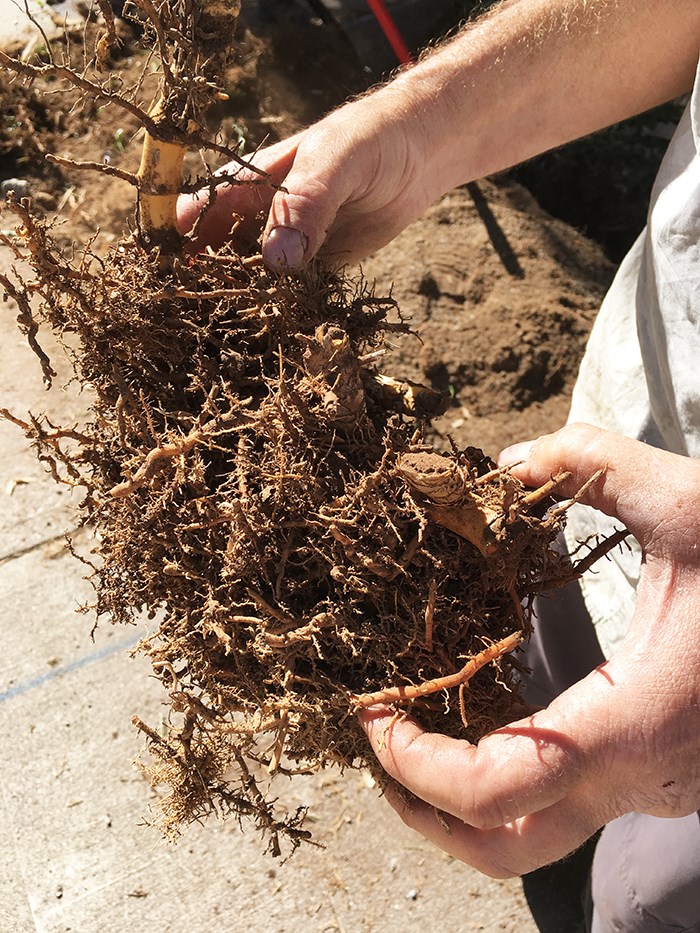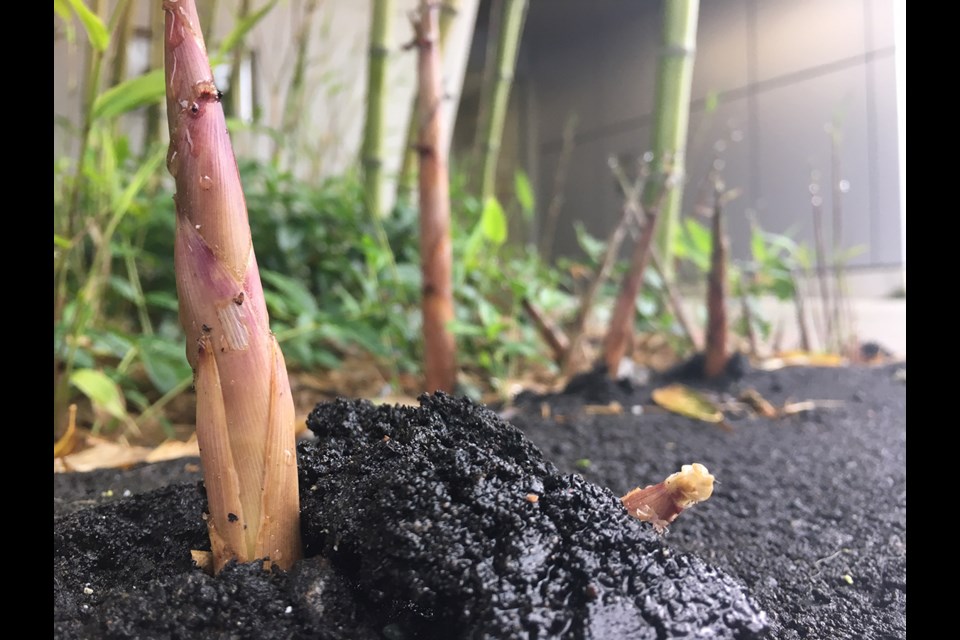One has to admire the tenacious strength of the bamboo shoot that pushed its way through freshly laid asphalt near the Vancouver Courier office this spring.
Almost heroic in its quest, it seemed able to move heaven and earth in its search for life-giving sunshine.
The team of workers who tried to root out the same bamboo a few months later may beg to differ.

They spent an afternoon in the sun digging a deep trench around the decorative stand of bamboo planted next to the sidewalk on West 3rd Avenue in hopes of trapping its wandering roots. They added a 30 cm-wide border of gravel as well as a thick plastic barrier between the gravel and sidewalk.
“Dealing with running bamboo after the fact is no fun,” says Douglas Justice, associate director, horticulture and collections at UBC Botanical Gardens. “I know from my own experience it’s not easy — you end up using axes and backhoes. You need serious equipment to get rid of it.”

The internet is full of stories by people trying to rid their garden of bamboo. His best pre-backhoe advice is to plant the right type of bamboo.
Clumping bamboo “tends to plod along in a regular fashion,” Justice says, and is less inclined to be bothersome.
Running bamboo does what its name suggests: run its roots underground to find any vulnerable outlet. If it can find an airspace — any airspace — to exploit, it will. Although it is not formally listed on Metro Vancouver’s invasive species list, invasive is how many people would describe its behaviour.
Bamboo’s main evolutionary tool is the shoot’s pointy tip. “Fresh asphalt sticks together like a date square so if you have something sharp it’s easy to make a hole through it,” Justice says of the bamboo next to the Courier office. Also in bamboo’s favour are its ability to grow quickly and its toughness. “There’s a lot of cellulose in the stem which stiffens it.”
If you want to plant running bamboo, it’s best to do it in an enclosed space such as a planter. He also notes that it doesn’t like dry soil. Even if you put a vertical barrier in the ground, there will be places where the barrier material overlaps, creating a space the roots can sneak their way through, or go over.
Justice says bamboo was introduced to the United States in the late 1920s and early 1930s. It was the Dust Bowl era and the department of agriculture was looking for alternative crops. Some bamboo shoots are edible if cooked properly and it was thought bamboo would be a good soil stabilizer. Bamboo started showing up in the Pacific Northwest in the 1950s.



